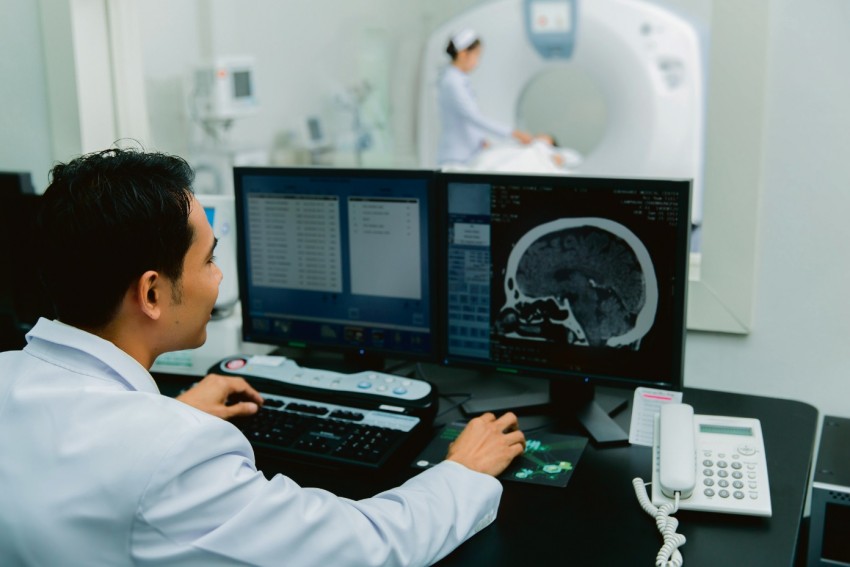The Science Behind Psychopathy, Romance and Loneliness

Thanks to recent breakthroughs in neuroscience, we have a greater understanding of how our emotions and social behaviours manifest in the brain. Aside from just seeing the phenomena occur, this knowledge gives us a real chance to improve lives and treat conditions like depression and autism.
From an evolutionary perspective, our social survival is an integral part of our species’ survival. As such, the need to belong is a fundamentally ‘human’ trait. This ranges from the simple pleasure of having a drink with your mates, to the more complicated task of forming social and romantic attachments in order to breed and raise offspring. The last 10 to 15 years have seen huge developments in the field of social neuroscience (the study of the neural basis of social behaviour). This increase is largely related to the increased use and availability of the fMRI machine. The fMRI machine looks like a huge, steel tube with a bed that slides into the centre, upon which lies the research subject (AKA a human). Inside the tube is a spinning electro-magnet with the strength of three teslas – or 50,000 times the Earth’s magnetic field. This magnet picks up signals from water in the brain, specifically hydrogen nuclei. When certain parts of the brain are active, there is an increase in oxygenated blood flow to that area and the clever fMRI scanner can tell the difference between hydrogen nuclei in oxygenated blood and deoxygenated blood. The result is an image highlighting which parts of the brain are activated when processing different kinds of information. FMRI studies have been able to tell us amazing things about social, and antisocial, human behaviour. For example, violent offenders have reduced functioning in the temporal cortex, compared with non-aggressive control subjects. Similarly, criminal and non-criminal psychopaths don’t show activation of the amygdala (the part of the brain associated with the threat and fear system) when presented with affective stimuli that would produce a response in non-psychopathic individuals. On a more positive note, the same part of the brain is activated when we see a beautiful face, as when we feel maternal or romantic love. Like the old saying goes, beauty really is in the striatum of the beholder. When we anticipate receiving rewards, like money or food, similar parts of the brain are activated as when we anticipate a positive social experience. Based largely on findings like these, researchers believe that social behaviour is controlled primarily by the brain’s reward system. The downside of being physiologically driven and rewarded for social behaviour is of course, loneliness. The driving force behind the success of multiple creative works and Morrissey songs, loneliness can have terrible consequences. Loneliness is more about the quality of your social relationships than the quantity, and is associated with poor sleep, abnormal heart function, an increased risk of developing dementia, and premature mortality. One explanation is that loneliness activates a threat response in the brain that motivates the individual to seek social relationships. If these social needs can’t be met, this threat response results in chronic damage to health and wellbeing. On February 11 this year, the journal Cell published a study from a research group at the Massachusetts Institute of Technology (MIT). The study, which was picked up as a research highlight by Nature one week after publication, identified a specific cluster of cells in the brain potentially associated with loneliness. A disclaimer here – this preliminary study, like most exploratory neuroscience research, was conducted on mice. The reason? The human brain and the mouse brain are 90 percent identical, and the use of mice in research seems to ring fewer ethical bells than research on a more closely related species, for example non-human primates. The researchers isolated individual mice from their cage-mates. After being left alone for 24 hours the lonely mice had strengthened neural connections in the dorsal raphe nucleus (DRN) part of the brain, compared to non-isolated mice. The DRN is usually relatively inactive in mice housed together. Further investigation by the research team revealed that the cells in this part of the brain were responding to isolation. When the isolated mice were reunited with their rodent mates, activity in the DRN surged and the mice become much more sociable than animals that had not been isolated. These findings demonstrate, for the first time, the specific parts of the brain that control feelings of loneliness and the drive to seek social connection. The long game here is that this knowledge could be useful for treating social difficulties experienced by humans, particularly those affected by disorders that inhibit social functioning like depression, anxiety or autism. With loneliness predicted to increase in importance as a public health issue, and with the growing impact of social media as both a social bridge and barrier, there remains much to be learnt about the human brain, and particularly how it dictates aspects of behaviour intrinsic to the human condition. Dr Jessica L Paterson is a Senior Research Fellow at Appleton Institute, Adelaide